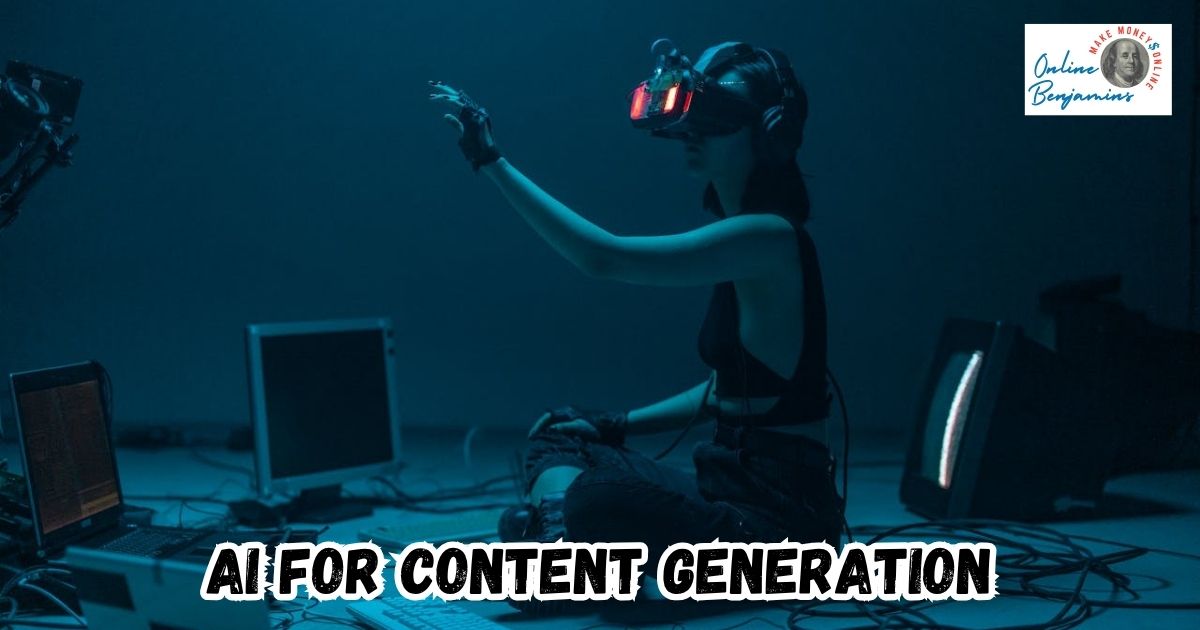AI content creation has changed the way I put together blog posts and social media updates. With the right tools, I can brainstorm new topics, draft content quickly, and make sure everything is optimized for my readers.
QUICK LOOK: – Tips for AI Content Generation
- Start with a Strong Content Brief: Giving your AI tool a clear prompt or outline produces better results. I include target keywords, topic ideas, and my intended audience details.
- Generate and Review Drafts: After the first draft comes out, I read through and pick out the good ideas and structure. I always add my voice to make the piece feel authentic.
- Edit and Optimize: I use AI-powered editing tools for grammar and readability. SEO tools give me a list of suggestions to bump up my content’s search engine visibility.
- Repurpose Content: Once a blog post is ready, I put AI to work by turning it into Twitter threads, LinkedIn updates, or Instagram captions. This way, I keep my messaging consistent and cut down on extra work.
- Automate Posting and Analyze Results: Scheduling tools powered by AI help me post at times when my audience is most active. After posting, I check insights to see what worked and what didn’t so I can tweak my future posts.
- Mix and Match AI Tools: Using more than one tool helps me get better ideas. For instance, I might use Jasper for drafting and SurferSEO for keyword fine-tuning. Switching it up lets me get more creative in my process and results.
- Automate Scheduling: AI-powered platforms like Buffer or Later handle posting across channels using detailed performance insights. This means I can post when followers are most active without having to watch the clock or do it manually. With their suggestions, I can experiment with new posting times too.
- Analyze Engagement with AI: Tools that track and report on which posts are working best help me improve over time. Sprout Social offers some good AI features that break down engagement trends and suggest changes. Looking over these analytics keeps my content strategy sharp.
- Repurpose with a Purpose: AI can take a single blog post and turn it into multiple pieces for other channels. For instance, I use Writer for longform content but turn to Canvas Magic Write for Instagram captions to match the tone and length needed for each platform. This helps me get more from every idea, so nothing goes to waste.
This popular switch saves me time and makes it easier to keep up with the fast pace of digital marketing. In this article, I’ll show you how AI can help you boost your output and quality for blogs and social content, especially when you’re looking to maximize your impact with less effort.
AI has moved from being a background tool to a core part of my daily workflow. When I use AI for content generation, I can turn ideas into published content much faster than before. The technology doesn’t just speed things up; it also helps keep my quality high and my process more streamlined. Content marketers and business owners like me see big benefits in both the planning and execution stages. I see more creators and small businesses jumping into AI tools every day.
Recent studies show that almost 45% of marketers have tried AI tools for content creation. The numbers are rising as platforms like ChatGPT, Jasper, and Rytr become more accessible. This popular move makes it easier for even small teams or solo creators to produce content at a scale that matches larger competitors.
AI first got its start in automating simple tasks like spelling or grammar checks. Today, it goes far beyond that by writing entire drafts, suggesting keywords, tweaking for search engines, and even analyzing what performs best. It’s a big step for anyone wanting to make their online presence more effective and efficient.
Getting Started with AI Content Generation
If you’re thinking about AI content for your blog or social channels, it helps to know what to expect. Not all tools are created equal, and matching the right one to your needs makes things go much smoother. Here are some important areas I focus on when starting with AI content tools:
- Idea Generation: AI can take a general topic and quickly suggest blog titles, social post angles, or series ideas that I might not have thought of myself.
- Drafting: Many AI writers, like Jasper or Copy.ai, can create first drafts from a short prompt. This saves me a lot of time, especially when I have writer’s block.
- Editing and Proofing: Tools like Grammarly or HemingwayAI go through my writing, clean up sentence structure, and suggest style tweaks that make my posts easy to read.
- SEO Optimization: SEO-focused tools such as SurferSEO or SEMrush can scan my blog posts and make suggestions to improve ranking, like adding keywords or adjusting headline phrasing.
Many top AI tools will offer one or more of these features, or will connect using plugins and integrations. I usually start with one tool and expand my toolkit as needed, so I don’t feel overwhelmed.
As you get the hang of these core steps, experimenting with new features becomes easier. Even small teams or solo entrepreneurs have found success by starting simple and adding complexity only when it fits their workflow.
Building an efficient workflow is key to getting the most from AI content tools. Here’s the basic process I use to keep things manageable and productive:
- Start with a Strong Content Brief: Giving your AI tool a clear prompt or outline produces better results. I include target keywords, topic ideas, and my intended audience details.
- Generate and Review Drafts: After the first draft comes out, I read through and pick out the good ideas and structure. I always add my voice to make the piece feel authentic.
- Edit and Optimize: I use AI-powered editing tools for grammar and readability. SEO tools give me a list of suggestions to bump up my content’s search engine visibility.
- Repurpose Content: Once a blog post is ready, I put AI to work by turning it into Twitter threads, LinkedIn updates, or Instagram captions. This way, I keep my messaging consistent and cut down on extra work.
- Automate Posting and Analyze Results: Scheduling tools powered by AI help me post at times when my audience is most active. After posting, I check insights to see what worked and what didn’t so I can tweak my future posts.
Using this step-by-step process keeps my content pipeline full and running smoothly, no matter the size of my team. Over time, these routines help spot patterns in what my audience likes, so I can keep improving and adjusting as I go.
What to Think About Before Relying on AI Content Tools
AI content generation sounds simple, but there’s more to it than pressing a button. I’ve learned to watch out for a few key challenges when using these tools regularly:
- Voice and Authenticity: Sometimes, AI outputs can sound mechanical if I’m not careful. It’s really important to review and personalize each piece so my voice comes through.
- Accuracy and Fact Checking: AI sometimes generates text that isn’t correct or is outdated. I cross-check facts, especially with stats, news, or direct quotes.
- Plagiarism Concerns: Most platforms now include plagiarism checks, but I always run sensitive content through separate tools. This keeps my work original and protects my reputation.
- Costs and Paid Features: Many advanced features are behind paywalls. I compare different tools and pick those that match my budget and long-term needs.
Voice and Authenticity
Keeping my natural style is super important for building trust. AI can help draft, but I make sure every article or post feels like it’s really from me by adding stories, examples, and personal insights. This extra step makes a big difference for my readers and followers because nobody wants content that feels robotic.
Accuracy and Fact Checking
Checking every fact is a regular part of my work now. If the AI pulls data or examples, I look each one up, especially if it’s a claim or something backed by numbers. Misinformation can hurt my credibility, so this step helps me avoid problems down the line. Sticking to up-to-date info and credible sources is the best way to keep my audience’s trust.
Content Originality
While most AI copy is unique, sometimes it can come up with ideas or phrases that are close to existing content online. I use tools like Copyscape or Grammarly’s plagiarism checker to make sure that what goes live is 100% mine and not pulled from somewhere else. Original content stands out and is better for search rankings, so keeping things fresh always pays off.
Managing Costs and Features
Trying out free versions is a good way to start. As I get used to the process, I decide if the paid features are worth it. For most users, focusing on one or two main tools is enough and helps limit monthly expenses while still offering big improvements in workflow. Tracking which features I use most helps me avoid wasting money on extras that don’t fit my content strategy.
I’ve learned these steps help me avoid most pitfalls and keep my content process running without any major issues. Taking a little extra time up front means less stress and better results over the long haul.
Advanced Tips to Get More From AI Content Generation
Once you’ve nailed the basics, you can get a boost from AI-generated content. Check out these advanced ways I step up productivity and content quality for both blogs and social media:
Mix and Match AI Tools: Using more than one tool helps me get better ideas. For instance, I might use Jasper for drafting and SurferSEO for keyword fine-tuning. Switching it up lets me get more creative in my process and results.
Automate Scheduling: AI-powered platforms like Buffer or Later handle posting across channels using detailed performance insights. This means I can post when followers are most active without having to watch the clock or do it manually. With their suggestions, I can experiment with new posting times too.
Analyze Engagement with AI: Tools that track and report on which posts are working best help me improve over time. Sprout Social offers some good AI features that break down engagement trends and suggest changes. Looking over these analytics keeps my content strategy sharp.
Repurpose with a Purpose: AI can take a single blog post and turn it into multiple pieces for other channels. For instance, I use Writer for longform content but turn to Canvas Magic Write for Instagram captions to match the tone and length needed for each platform. This helps me get more from every idea, so nothing goes to waste.
Trying out new combinations like these helps me figure out what works best for my audience and keep content relevant. Being flexible and adjusting the toolkit as my needs evolve is the best way to keep things fresh.
Key Tools for AI Content Generation
Here are some tools I use and recommend for those serious about stepping up their content:
- Jasper: Best for blog drafts, website copy, and marketing emails. Offers templates and tone controls.
- Copy.ai: Good for generating social posts, product descriptions, and ad ideas. It’s fast and user-friendly.
- SurferSEO: Focuses on making content search-friendly with real-time optimization suggestions as I write.
- Canva Magic Write: Useful for creating catchy captions for visuals and quick copy for graphics.
- Grammarly and Hemingway Editor: Both help with editing and making content easy to read and mistake-free.
- Buffer and Later: For scheduling posts on all major social accounts using AI-based recommendations for timing and frequency.
Blending a few of these tools gives you the flexibility to handle everything from blogging to multichannel social campaigns. No matter your team size, these will help you cover all your bases without getting overwhelmed.
Frequently Asked Questions
New users often have similar questions when trying AI for content. Here are a few I hear most regularly:
Can I trust AI-generated content to be accurate?
AI tools are great at structuring and speeding up drafts, but I always recommend double-checking facts and making sure everything fits your knowledge and expertise. Being hands-on is the key to keeping your standards high.
How do I make sure my posts still sound like me when using AI?
I always review and tweak each piece, adding my own opinions, anecdotes, and experiences to keep the writing personal and authentic. Mixing in your style is what sets your content apart from the rest.
What’s the best way to pick the right AI tool?
I try out a few options through free trials or demos, check which features match my daily needs, then commit to the tool that fits my workflow and budget. Testing a few makes all the difference when you’re deciding what fits best.
Final Thoughts on AI Content Generation
Building an effective content strategy for blogs and social media is a lot easier now that AI tools are widely available and user-friendly. Keeping my personal voice front and center means my followers get content that’s both informative and relatable. Trying new approaches, editing, and reviewing are all part of making sure technology helps me connect more effectively with my audience.
Whether you’re a busy solo creator or growing a team, AI-powered content generation can help you work smarter and achieve better results in less time. By staying flexible, testing new options, and making each piece your own, you’ll get the most out of this next-level cool tech and keep your digital presence strong.
Check Out Our Most Recent Articles:
- The Role Of Advertisements In Monetizing Content

- Video Content: 6 Tips for Boosting Engagement On Social Platforms

- A 4 Phase Guide to Creating Platform-Specific Content

- Analyzing Social Media Metrics For Content Success

- The Impact Of AI On Content Personalization

- How To Build A Social Media Engagement Strategy in 7 Steps

Wishing You Much Success with your AI Content Generation,

- onlinebenjamins.com
- thebeachangler.com
- thesinnerinthemirror.com
- Facebook: Online Benjamins
- Twitter: @onlinebenjamin1
- Instagram: dotcomdinero
- YouTube: Online Benjamins
Rex
P.S. If you have any questions or are unsure of anything, I am here, and I promise I will get back to you on all of your questions and comments. Just leave them below in the comment section. Follow me on Twitter: @onlinebenjamin1, Instagram: dotcomdinero, and Facebook: Online Benjamins.
Hi,
Thanks for stopping by and congratulations for taking the first steps to building your own online business. I’ve been in business both offline and online since 1997. I would consider it an honor to help you build your business. Father of 3, life long outdoorsman with an education in Genetics and Economics. This site is about cutting through the BS and finding the real opportunities in the online world. I look forward to working with you.



